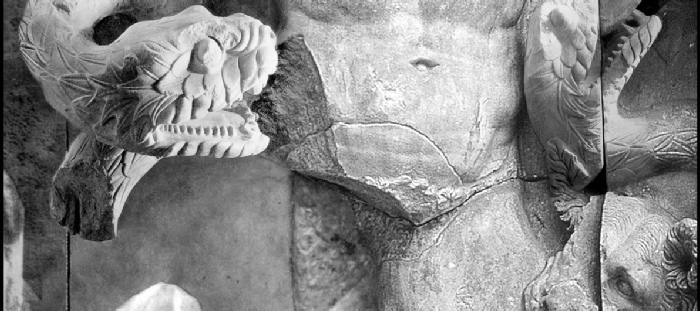Press Release
Borderlines draws attention to the ownership of the earth beneath our feet, underwater realms, the rules governing the international movement of goods, nation-

Borderlines
Talbot Rice Gallery, The University of Edinburgh (Scotland)
23.02 - 04.05.2019


© ArtCatalyse International / Marika Prévosto 2019. All Rights Reserved
Lonnie van Brummelen & Siebren de Haan have three works in the exhibition. Monument to Another Man’s Fatherland reflects on the story of the Pergamon Altar, now in the Pergamon Museum in Berlin, in relation to the plight of Turkish migrants hoping to enter the EU, just as the repatriation of the Parthenon (Elgin) marbles reappears in public debate as a result of the Brexit negotiations. Another work features blocks of sugar shown alongside a complex story of sugar exports and trade tariffs. The third film work, particularly poignant in the context of the Brexit campaign’s close alignment with the UK fisheries, charts the rise and fall of the Urk (Dutch) fishing community after their inland sea was dammed to create land for development.
Lara Almarcegui explores the ownership of mineral rights, unearthing how the land beneath our feet is governed, while Rossella Biscotti’s research into the implications of her tipping a huge slab of marble overboard into international waters creates a layered picture of the different frontiers of the sea. A more ancient sea is evoked in the salt bowls made by Ruth E Lyons, all carved from salt mined from a deposit that dates back millions of years to the Zechstein Sea, stretching from Ireland to Poland. Willie Doherty reflects on the border where Ireland and Northern Ireland meet, meditating on the dramatic impact that Brexit might have on points on the road, haunted by memories of the militarised border in place before the Good Friday Agreement.
Nuria Güell presents a consultancy that offered citizens of the PIIGS nations bailed out by the European Commission, European Central Bank and IMF the opportunity to perform fiscal disobedience based on the tax avoidance schemes used by the super-
Curated by Tessa Giblin, Director of Talbot Rice Gallery.
Supported by Creative Scotland, the Mondriaan Fund and Edinburgh College of Art.

Van Brummelen & De Haan, Revolt of the Giants (still), 2008. Film.